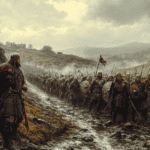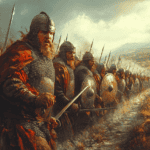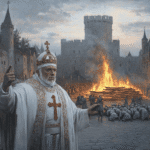
On a windswept autumn day in October 1209 the people of Llanfaes, a bustling port on the Isle of Anglesey in Wales, looked out across the Menai Strait and saw six long, narrow ships slicing through the grey waters. These were not merchant vessels nor friendly visitors, but Viking raiders – an apparition from an earlier, bloodier age, come to visit one last calamity upon Welsh soil.
Llanfaes: The Jewel of Gwynedd
In the early thirteenth century, Llanfaes was no mere village. It was the principal port of Gwynedd, the royal gateway to the Irish Sea, and a hub of trade and commerce. Its strategic position made it a tempting target for any would-be plunderers, especially those with the seafaring prowess of the Norse. The town’s prosperity was visible in its busy quays, its markets, and the ships that came and went, carrying goods and news from as far as Dublin, Bristol, and the Hebrides.
The Last Viking Raid: A Chronicle of Fire and Blood
The events of that fateful day are preserved in a Welsh chronicle, O Oes Gwrtheyrn, likely penned at Aberconwy Abbey within a few years of the raid. According to the chronicle, six longships landed at Llanfaes. The Norsemen, led by a man named Herlant Pic (Erlendr Pikr in Norse), descended upon the town, setting it ablaze. The flames devoured homes, warehouses, and workshops, sending smoke billowing into the autumn sky.
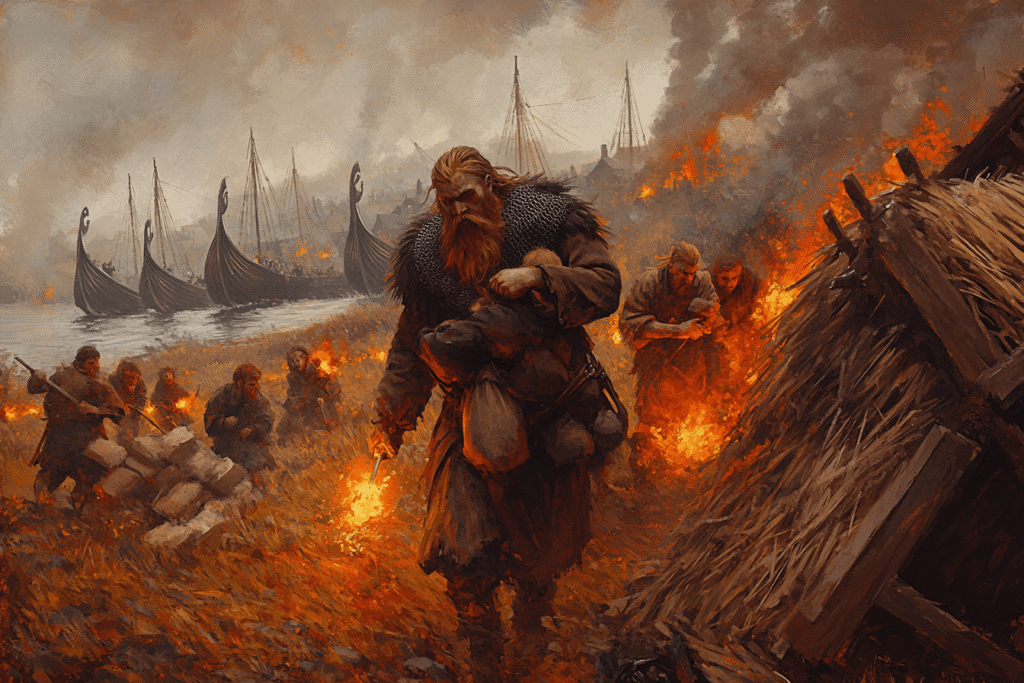
But this was not a simple raid for plunder. Herlant Pic was no common pirate; he was the steward of the court of the King of Norway. His presence at the head of the raiders hints at a deeper, more tangled web of politics and alliances that stretched from the fjords of Norway to the shores of Wales.
The Wider World: Civil War in Norway and the Irish Sea
To understand why Vikings appeared at Llanfaes in 1209, one must look northward to Norway. In the twelfth century, Norway was torn apart by a brutal and prolonged civil war between two factions known as the Baglar and the Birkibeinar. Erlendr Pikr was a leading member of the Baglar faction. By the early 1200s, neither side had managed to achieve a decisive victory. A peace settlement in 1208 finally brought an uneasy truce, and the following year saw a remarkable development: a joint expedition to the west, involving men from both sides.
This expedition seems to have had several purposes. Its leaders sought to reassert the Norwegian king’s authority over the Norse colonies in Orkney and the Hebrides, to symbolically end their own internal conflict by turning aggression outward, and – perhaps most practically – to raise funds through raiding Britain, Ireland, and the surrounding islands.

The Viking Campaign
Our main Norse source for the campaign, the Böglunga sögur (Sagas of the Civil Wars), explicitly uses the term viking for this expedition. It records that twelve ships set sail from Norway and even lists the names of the men aboard. Among the Baglar contingent appears the name Erlendr Pikr leading half the expedition’s ships to Llanfaes in October 1209.
Politically, the campaign initially achieved its aims: the rulers of both Orkney and the Kingdom of Man and the Isles traveled to Norway to offer tribute to the king. However, Böglunga sögur also records that the expedition soon descended into disorder as the Norse plundered the Hebrides and the neighbouring islands including the holy island of Iona with its famous monastery. Since Norway was now, at least nominally, a Christian country, this sacrilegious act did not go down well with the clergy back in Norway.
The plundering of Iona – and the subsequent collapse of cohesion within the expedition – suggests the campaign spiraled beyond the leaders’ control. It was after these events that Erlendr Pik and six of the twelve ships, made their way south to Llanfaes.

There is, however, a deeper political dimension to consider. Erlendr Pikr had been a supporter of the Baglar faction, while the reigning king of Norway, Ingi Bárðarson, came from the rival Birkibeinar. From Erlendr’s perspective, the diplomatic triumph of seeing Orkney and the Isles submit to King Ingi offered little personal benefit: why strengthen a former enemy? For Erlendr and his Baglar comrades, plundering may have seemed a far more rewarding course of action. This could explain why half the expedition’s fleet broke away to attack Llanfaes, a flourishing port in Gwynedd, just as Norway’s western territories were stabilizing under Ingi’s rule.
Revenge?
Other factors likely contributed to the decision to attack the Welsh port. When the Norwegians reached Llanfaes, Llywelyn ab Iorwerth, ruler of Gwynedd, had just returned from accompanying King John of England on a campaign into Scotland. Though their alliance would sour in the years ahead, in 1209 Llywelyn and John were still strong political partners.
Crucially, King John had long been entangled in the Norwegian civil wars. He supported the Birkibeinar, sending corn, money, and even Welsh mercenaries from his lordship of Glamorgan to aid King Sverre of Norway, Ingi’s predecessor. These Welsh troops are even mentioned as a distinct force in the Sverris Saga. John’s support was partly strategic: his great rival, Philip Augustus of France, backed the Baglar side. Like so many civil wars, the conflict in Norway was fueled by the rivalries of greater powers.
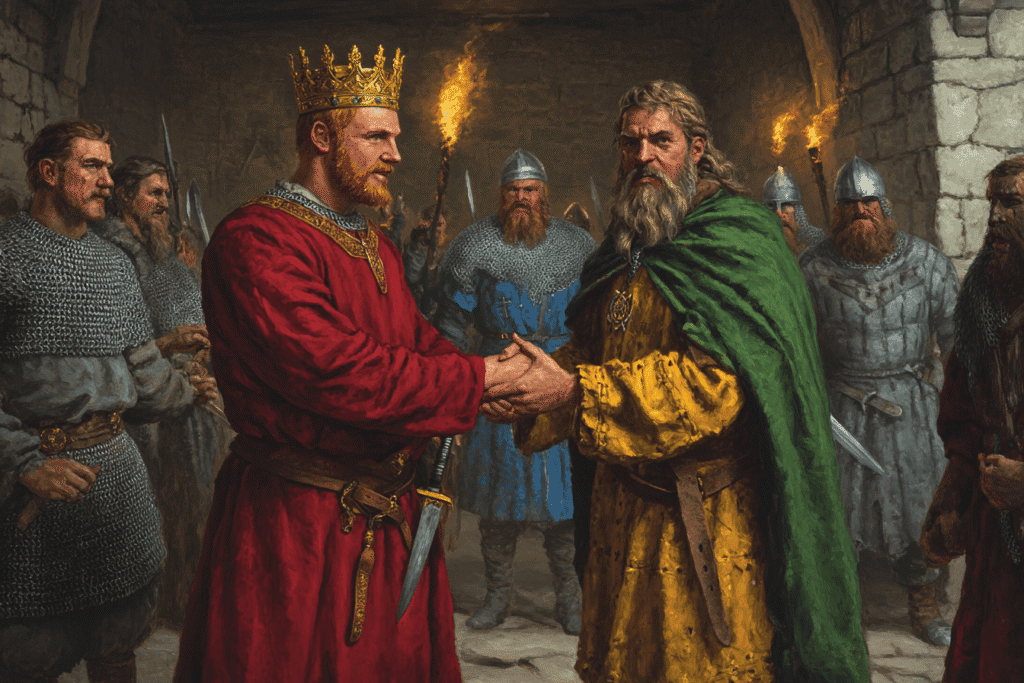
Given this, it suggests that Erlendr Pikr and his Baglar companions, in attacking Llywelyn’s port at Llanfaes, were acting out a longer memory: a retaliation for the Welsh and English support their enemies had once received. Thus, the raid on Llanfaes was not a random act of piracy. It was shaped by a tangled web of alliances, rivalries, and lingering resentments that stretched across the North Atlantic world.
The Battle and Its Aftermath
The attack was swift and brutal, designed to seize wealth and supplies before local forces could muster a defense. Despite the surprise and ferocity of the assault, the townspeople and remaining defenders did not surrender meekly. The chronicle records that the raiders were eventually repulsed, and their leader, Herlant Pic, was killed in the fighting. This was a remarkable feat, for the Norse were seasoned warriors, and their leader a man of stature in the Norwegian court.
The burning of Llanfaes was devastating, but the town would recover and even thrive in the decades that followed. The raid itself, however, marked the end of an era: it was the last recorded Viking raid on Wales.
The Legacy of Viking Raids in Wales
The Llanfaes raid was not an isolated incident, but the final act in a long and complex history of Viking activity in Wales. For centuries, Norse raiders had harried Welsh coasts, attacking monasteries, towns, and ports. Earlier centuries had seen the likes of Rhodri the Great fighting off Viking invaders, and Welsh rulers sometimes hiring Norse mercenaries or forging alliances by marriage.
Yet, unlike Ireland or parts of England, Wales never succumbed to large-scale Viking settlement. The Welsh kingdoms, fiercely independent and often quick to resist, proved a difficult prize for would-be conquerors. Viking presence was mostly limited to raids and fleeting alliances, with only a handful of archaeological sites, like Llanbedrgoch, showing evidence of more permanent Norse activity.
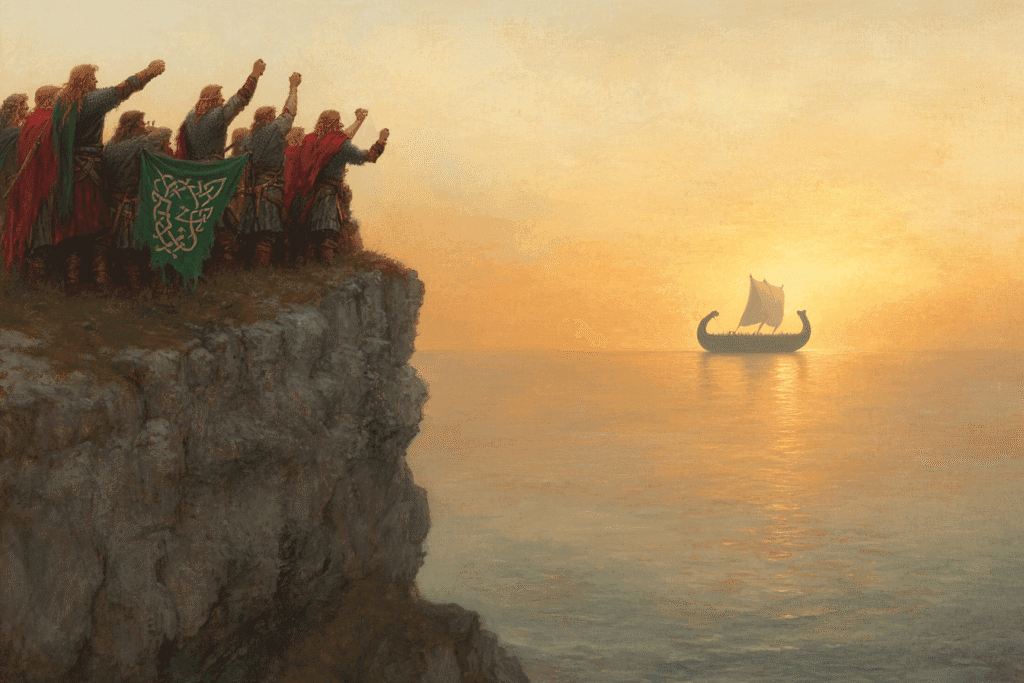
A Web of Alliances and Rivalries
The 1209 raid was shaped by the intricate web of alliances and rivalries that defined the politics of the British Isles and Scandinavia. For the Baglar faction, now outmaneuvered and marginalized, raiding was both a means of survival and a way to assert their independence. The attack on Llanfaes was thus as much a product of Norwegian internal politics as it was of local opportunity.
The burning of Llanfaes stands as a poignant symbol – the last Viking raid on Welsh soil, echoing the violence and uncertainty that had haunted the Irish Sea for centuries. The age of the Vikings had ended, swept away by new powers and new forms of warfare. The Norsemen who had once dominated the seas were now caught up in the politics of kingdoms and empires.

